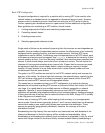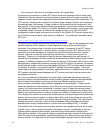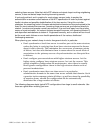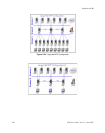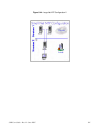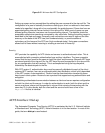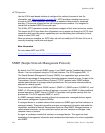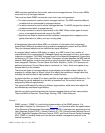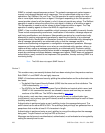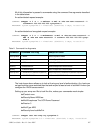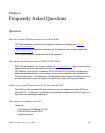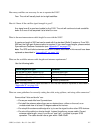
104 S100 User Guide – Rev. D – June 2005
SyncServer S100
ACTS Operation
Use the S100’s web-based interface to configure this method of access to time (for
information, see “Main Settings” on page 65
). ACTS provides a backup time service
through an ASCII time broadcast, and supports a measured delay mode for enhanced
accuracy. This service is based on the use of asynchronous modems. It is designed to
coexist with a standard IRIG B time code input.
The S100’s ACTS operation includes simultaneous support of both client and server modes.
This means the S100 can obtain time information from a remote site through an ACTS client
connection while providing server capabilities such as distributing time information to local
clients or other S100 units.
When services are available, an ACTS client call will not modify the S100 clock if the unit is
currently decoding a valid time code signal.
More Information
For more about NIST and ACTS:
http://www.boulder.nist.gov/timefreq/service/acts.htm
SNMP (Simple Network Management Protocol)
By default, the S100 has both SNMP version 1 and SNMP version 3 enabled upon bootup.
Version 1 can be configured using the S100 web interface. The S100 supports MIB 2.
The Simple Network Management Protocol (SNMP) is an application layer protocol that
facilitates the exchange of management information between network devices. It is part of the
Transmission Control Protocol/Internet Protocol (TCP/IP) protocol suite. SNMP enables
network administrators to manage network performance, find and solve network problems,
and plan for network growth.
Three versions of SNMP exist: SNMP version 1 (SNMP v1), SNMP version 2 (SNMP v2), and
SNMP v3. All versions have a number of features in common, but SNMP v2 offers additional
protocol operations. SNMP Version 3 (SNMP v3) provides much greater security than the
previous two. The S100 supports SNMP v1 and v3.
An SNMP-managed network consists of three key components: managed devices, agents,
and network-management systems (NMSs).
A managed device is a network element that contains an SNMP agent and that resides on a
managed network. These devices collect and store management information and make this
information available to Network Management Systems using SNMP. Managed devices, or
called network elements, can be routers and access servers, switches and bridges, hubs,
computer hosts, or printers.
An agent is a software module that resides in a managed device. This agent has local
knowledge of management information and translates that information into a form compatible
with SNMP.



